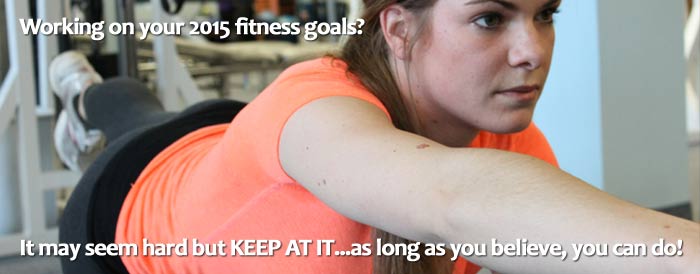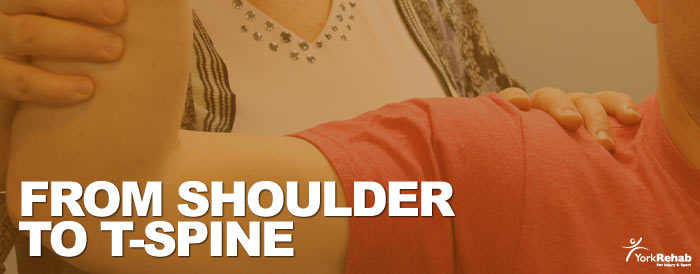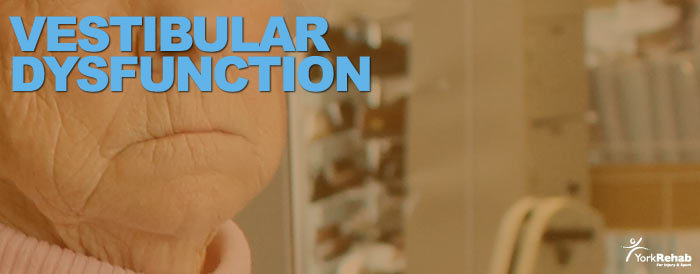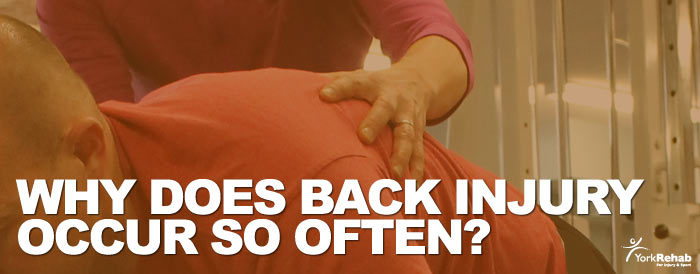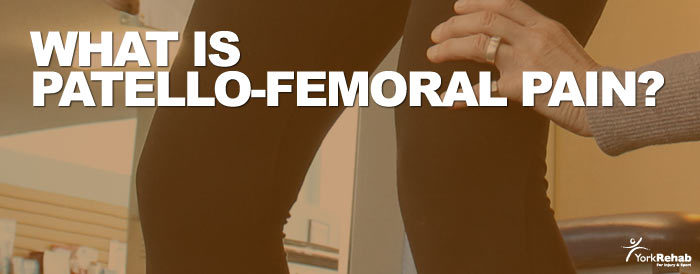Physiotherapy Articles
Achieving Fitness Goals
Ten things to consider as you work on fitness goals for the new year:
- Create realistic and specific goals.
Aim high but be realistic. Setting a goal of running a marathon(42K) within the next year when you’ve never even run a 5K distance may be a situation where your intention may be genuine but the practicality may be unreasonable. If you don’t run regularly, start with a goal of committing to 1 – 2 runs per week with a goal of 4 – 5 times per week within 6 mos. Make your goals meaningful but practical and remember small steps are all that is required…no need to hit a home run every time. Running for 20-30 minutes 3 times a week is better and safer than a 60 minute run once every 1 – 2 weeks.
Also, be specific. Start with “I’ll exercise 3 mornings a week” versus, “I’ll start going to the gym more this year”. - Choose fitness activities that you enjoy.
Fun and enjoyment are terrific motivators. Select fitness activities that challenge you, but that you can enjoy. Fitness activities work better when there’s a personal fit – exercises or classes that YOU enjoy which also make you feel good about you and your ability to achieve your goals. If you can do it for enjoyment instead of out of obligation, you will have found the magic mixture. Whether alone, in a highly active group like a Zumba or Spin class, make it your plan to find an activity that you enjoy. - Don’t set goals for the year…create monthly targets instead.
Remember to set realistic, simple goals. Avoid long term goals that may seem unattainable chores. Instead set new goals monthly. These are easier to measure and will thus keep you motivated. As you achieve a short term goal, you may push yourself for a bigger challenge. This approach helps you to be flexible. Some weeks you may fall short, then the next time you may surprise yourself. Your fitness is for you and you want to succeed so set goals that you can touch and feel so you see your accomplishments. - Accountability needs to be part of the process.
What’s your accountability plan? What ensures that you are on track? As mere mortals accountability is vital. You may set your own accountability schedule by writing down and checking off planned activities. Alternately, have a helper or find a buddy and work at keeping each other accountable. A Trainer, if affordable, is a great asset and incentive for motivation and accountability. Whatever method you use make it a regular and fairly rigid process. - Success comes easier in twos.
Exercising with another person increases fitness success rates. A gym or fitness buddy adds motivation, accountability, regularity, and best of all fun! Plan your workout, gym or exercise classes early to attend together. If you can’t find a friend, make one at a gym or exercise class. - Recognize the small accomplishments along with the big ones…and reward yourself!
As you set and achieve those small goals reward yourself!! Celebrate successes alone or with others, and let the world know you have lost two inches – if that was your goal. Treat yourself to something that you enjoy. Perhaps purchase that two sizes smaller outfit that you were eying; or splurge on a favourite meal or movie with your buddy or a friend. You have done well!! - Keep a record of your progress.
As you complete your daily exercise activity write it down. Not only is it a useful way to track progress, it’s something that you can refer to for encouragement if you get of track. Seeing how much you’ve completed often provides that incentive to continue. - The reason for doing should be for more than just weight loss.
There is much more to getting active than just to lose weight. It’s the fuel for becoming a healthier, stronger, feeling better about yourself and ultimately happier individual. The way you look will is just the icing on the cake (the cake reference is figurative…not a fitness recommendation). - As each new day comes, act like it’s the first day of the year.
The new year provides great motivation for introducing new habits and goals into our lives. But once the first few days pass, falling back into a rut can be a danger. Create new motivation for yourself by treating each day as the start of the year…look at it as an opportunity begin a new and before you know it you’ll have formed a habit that makes it easier to continue. - If you fail by stopping, simply start again…stumbling blocks are part of the process!
Do not be discouraged. Resolutions are not always easy to stick to. Stumbling or stopping is okay as long as you get back up and start again. Once you falter, assess the reason and resolve to start again. If building momentum is hard, reevaluate your approach. Perhaps try a different method, set a smaller goal, or give yourself a short break. Don’t give up! Resolve to starting again and again until you find your rhythm towards success.This is your life, and you only have one so take good care of it. Think positive. Have FUN and remember, if you truly believe you can, you will!
From Shoulder to T-Spine: Become Unconsciously Competent
York Rehab’s Physiotherapists Jen Bladon did a guest post (May 14, 2014) for the move-everywhere.com website, whose mission is to develop an elite health and fitness conference for allied health, fitness and sports medicine professionals. Jen’s article focused on the shoulder along with its complexities and dependencies. You can read Jen’s article here.
Vestibular Dysfunction
Vestibular dysfunction is quite common, especially in older people. A major symptom that one can experience is dizziness. When people get the type of dizziness called vertigo, or a sensation of the room spinning, this is often a sign of a problem with the vestibular system. The vestibular system includes the parts of the inner ear and brain that help control balance and eye movements.
The risk of falls, which increases with age, is associated with dizziness, a loss of balance, weakness, a cardiac event (i.e. heart attack) or a stroke, etc. Falls are among the leading causes of hospital admissions for elderly people.
In a recent study by Dr. Marousa Pavlou and her colleagues at King’s College in London, 25 older adults with two or more unexplained falls in the past year were compared to 16 healthy older adults.¹ Another group included in the study were 15 adults previously diagnosed with a vestibular disorder. The study focused on finding out if adults who fell were more likely to have vestibular impairment. The researchers looked at several different areas to compare the groups, including risk of falls, quadriceps strength, and walking.¹
The researchers found that 80% of adults who had multiple falls tested positive for having a vestibular disorder.¹ By comparison, only 19% of the adult non-fallers were found to have a vestibular impairment. On walking tasks, the older adult fallers had a higher risk of falling as well as significantly poorer overall performance. Similarly, when comparing the adult fallers to the group with a confirmed diagnosis of vestibular impairment, the researchers found the adult fallers had weaker quadriceps muscles .
A recent article by Dr. Will Boggs highlighted the importance of this study.² The article also quoted Dr. Yuri Agrawal (from John Hopkins University School of Medicine’s Department of Otolaryngoglogy-Head and Neck Surgery), who emphasized the increased likelihood of vestibular impairment in the elderly and likewise the increased risk of falls in those diagnosed with a vestibular disorder.
Dr. Agrawal draws attention to the need for testing for the possibility of vestibular impairment in elderly people who have experienced multiple falls.²
The importance of this research study should not be overlooked. Both the study and the article’s authors suggest that the majority of adults who experience multiple falls and test positive for vestibular impairment, improve with rehabilitation.¹´² The article recommends that older adults who fall should be tested to see if they have vestibular impairment, and if they do, they should be referred to appropriate health care professionals: ENT (Ear, Nose and Throat Doctor) for further evaluation, or to physical therapists trained in vestibular rehabilitation, who can provide vestibular training. Falls clinics or falls prevention programs and family doctors may start to look at testing their patients for vestibular impairment. In seniors testing positive for vestibular impairment, vestibular training may be an effective treatment. This article highlights the importance of testing elderly patients who have multiple falls for vestibular impairment,² and how this could directly affect the number of hospital admissions attributed to falls in the elderly.
1. Pavlou, M. et al., “Peripheral vestibular dysfunction is prevalent in older adults experiencing multiple non-syncopal falls versus age-matched non-fallers: a pilot study”, in Age and Ageing. London, UK. May 2013.
2. Boggs, W., summary article. “Peripheral vestibular dysfunction common in older adults who fall”. Reuters Health, New York, N.Y. October 10, 2013.
Why Does Back Injury Occur So Often
The vast majority of back injuries are accumulative in nature. What that means is that, on average, it takes 35 to 55 years of living before you accumulate enough wear and tear on the structures of the back that they begin to cause pain. The onset of pain can be quite variable. Often a person may notice only a bit of stiffness after prolonged sitting or bending, or mild discomfort after physical exertion such as snow shoveling. This can go on for years before anything more dramatic occurs. For others, the onset can be sudden and intense after a seemingly innocuous event such as sneezing or a bout of coughing.
Of course, back pain can also occur as the result of an injury where enough force is involved that the back structures sustain an acute injury. For example, a hyper-extension injury in soccer, falling off a horse or a car accident. In these circumstances, the back will progress through a healing cycle and repair the tissue. Depending on the severity of the injury, as with any structures of the body, you may be left with a “weak link” as the repair may not be perfect (eg. Ligaments maybe more lax post-injury which can affect the mechanics of the spine).
Obviously, these “weak links” will be more vulnerable to the usual stresses we place on the spine such as poor posture, inactive lifestyles etc. As a result, it is often noted that the pain from the original injury at some point did actually resolve but returned months or years later. This leads people to believe that the original injury never healed when in fact postural habits and time are catching up with them and “weak links” are going to feel the effects first.
With any injury it is helpful to receive some education on the healing process early on and instruction on what you can do to promote tissue repair to get the best outcome possible. Early intervention is the key.
What Is Patello-femoral Pain?
The spontaneous onset of anterior knee pain is a fairly frequent occurrence. It is often diagnosed as “Patello-femoral pain” a term which describes the pain as originating at the kneecap. The kneecap is a disc-like bone that sits on the top of the knee joint and is embedded in the tendon of the large muscle at the front of your thigh, the Quadriceps muscle. As you bend and straighten your knee the kneecap slides up and down across the front of your knee and provides a bit of elevation for the quadriceps tendon thereby allowing the knee to be fully extended. The underside of the kneecap is composed of cartilage which can gradually wear down as we age and through the accumulation of impact injuries to the knee (eg sports injuries). Other factors that can contribute to the development of knee pain include excessive body weight, genetics, and the bony architecture of the individual.
Inflammation can develop under the kneecap over time leading to episodes of pain, particularly when the kneecap is compressed against the knee joint. This typically occurs with activities like kneeling, squatting down, climbing up and down stairs, or sitting with the knees bent at an acute angle.
Unfortunately, it is not possible to regrow cartilage therefore the damage to it is cumulative. There is ongoing research into possible substances that may help regenerate cartilage after injury. The most well known of these is probably Glucosamine Chondroitin and early studies look promising that it may be of some benefit. Otherwise, treatment can include non-steroidal anti-inflammatory medication, and/or physiotherapy.
Physiotherapy treatment aims to relieve pain through various interventions which can include taping, ultrasound, acupuncture, and education on avoiding pain-provoking positions. Once pain control is achieved, exercises should be introduced to restore flexibility and strength in the knee.

